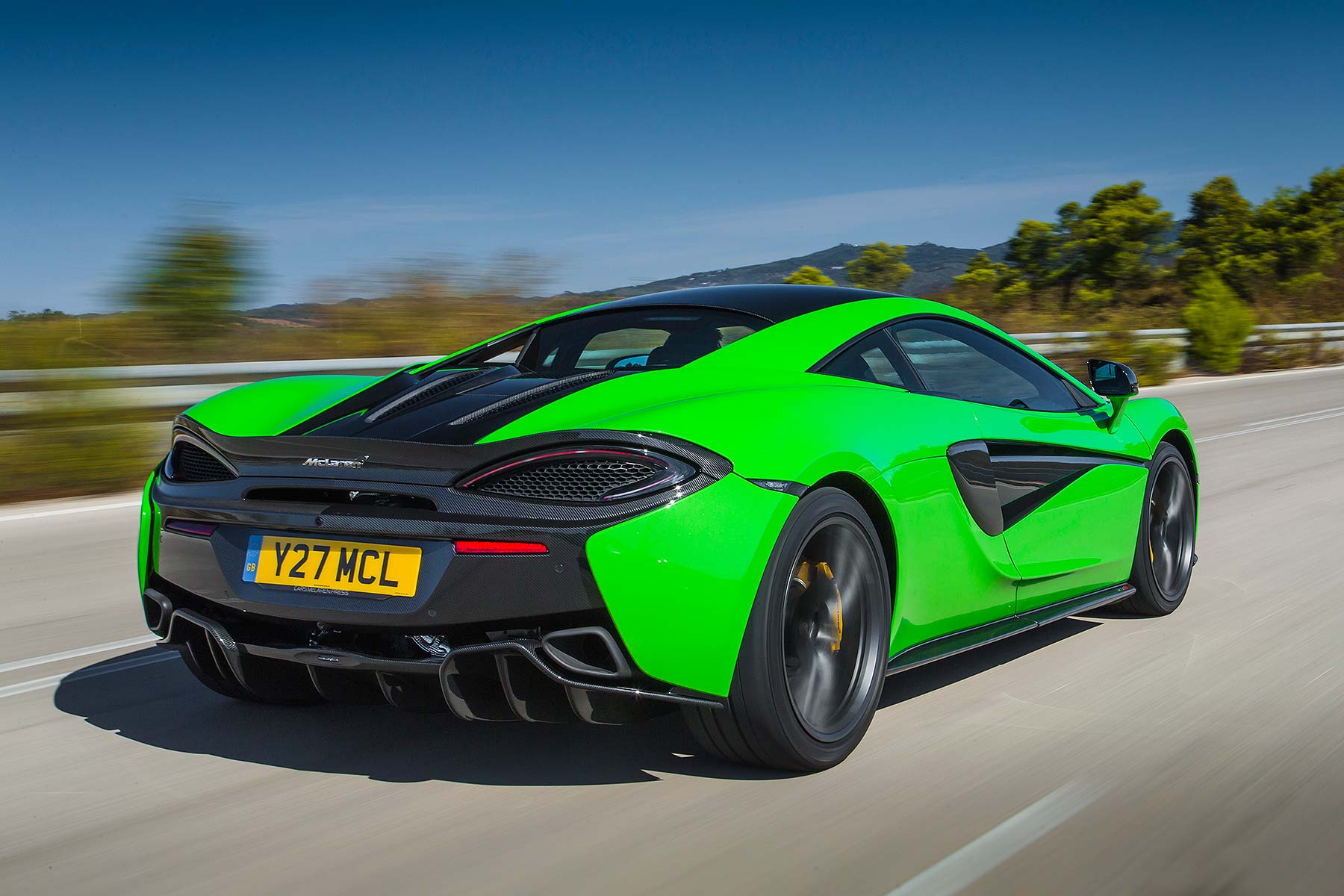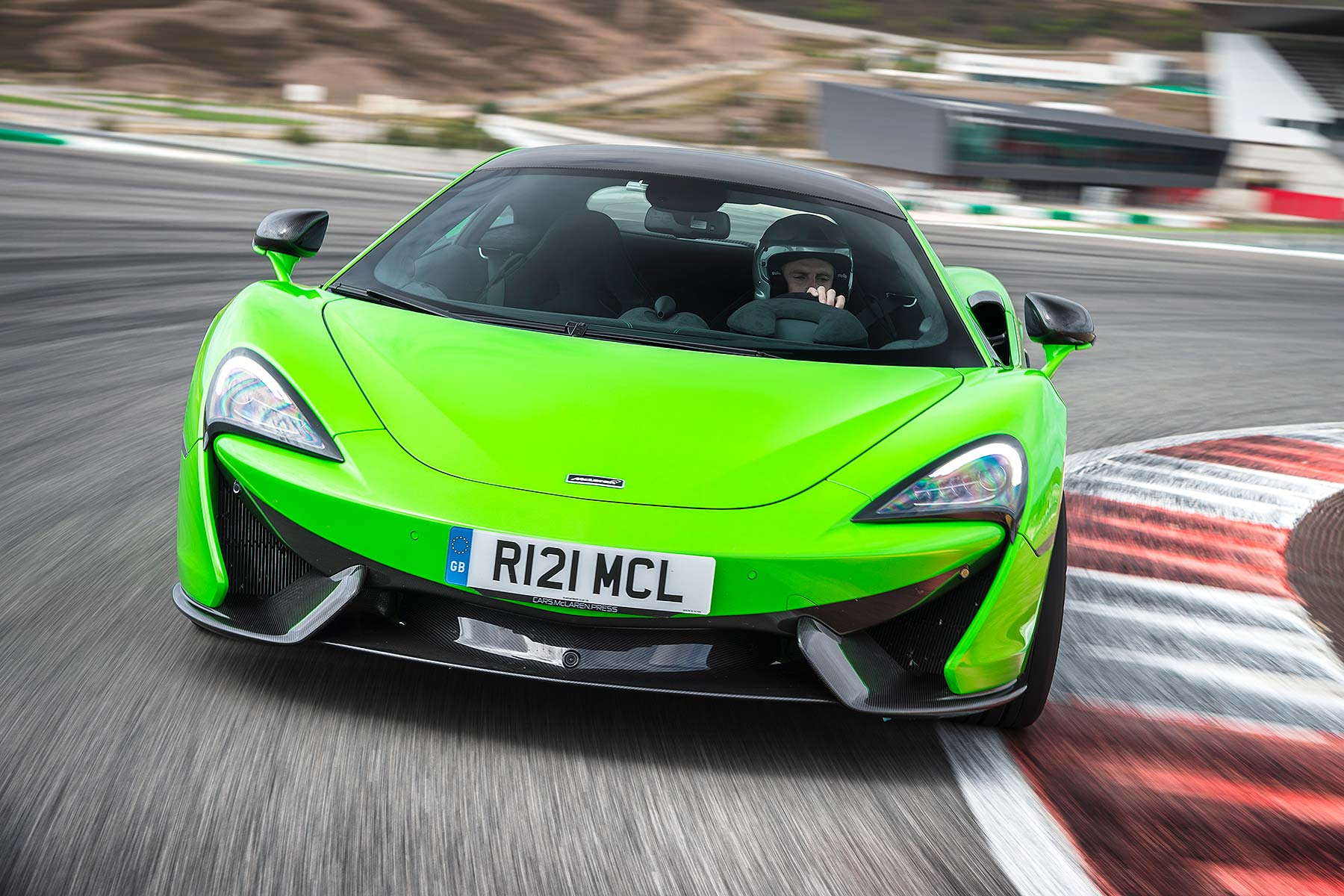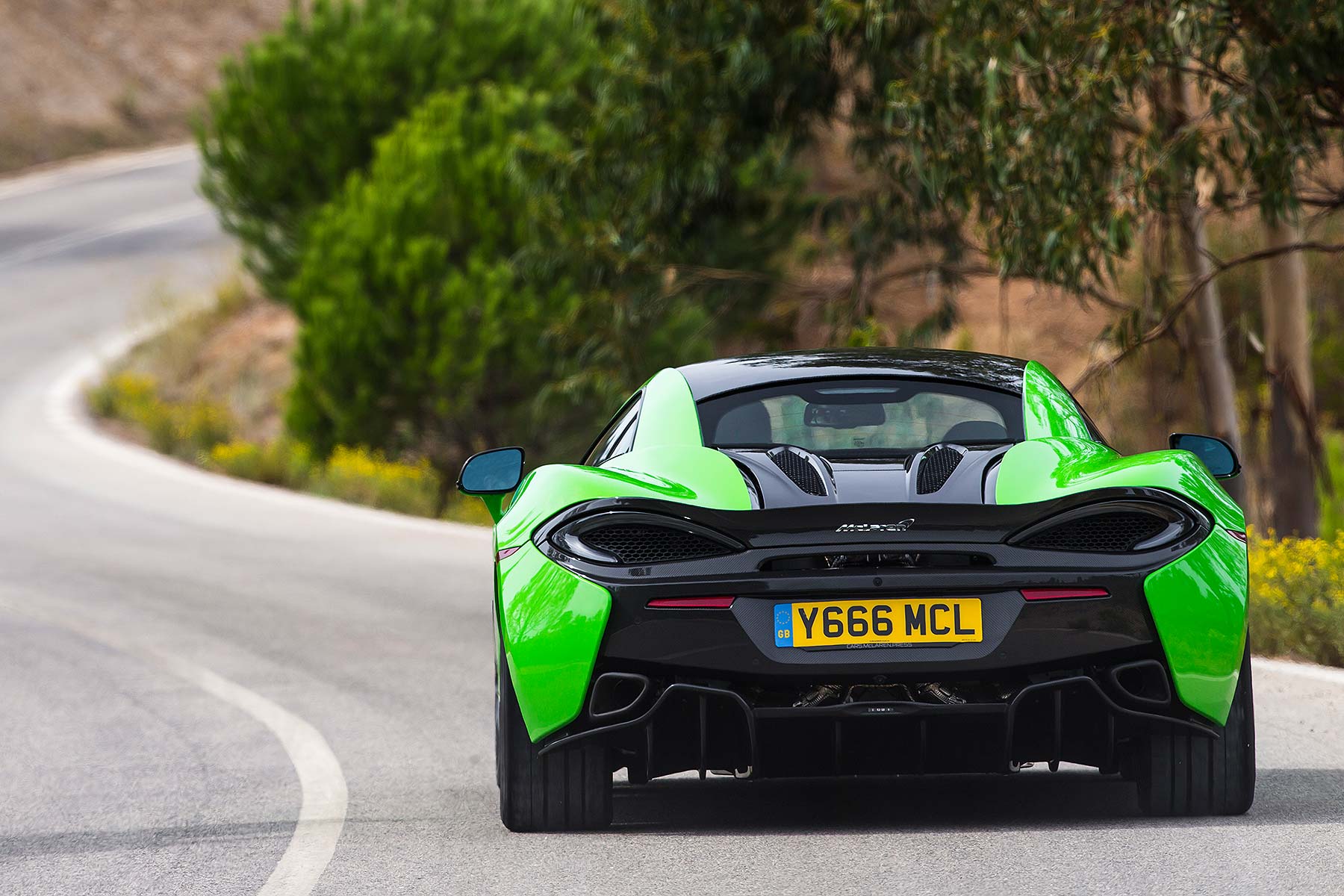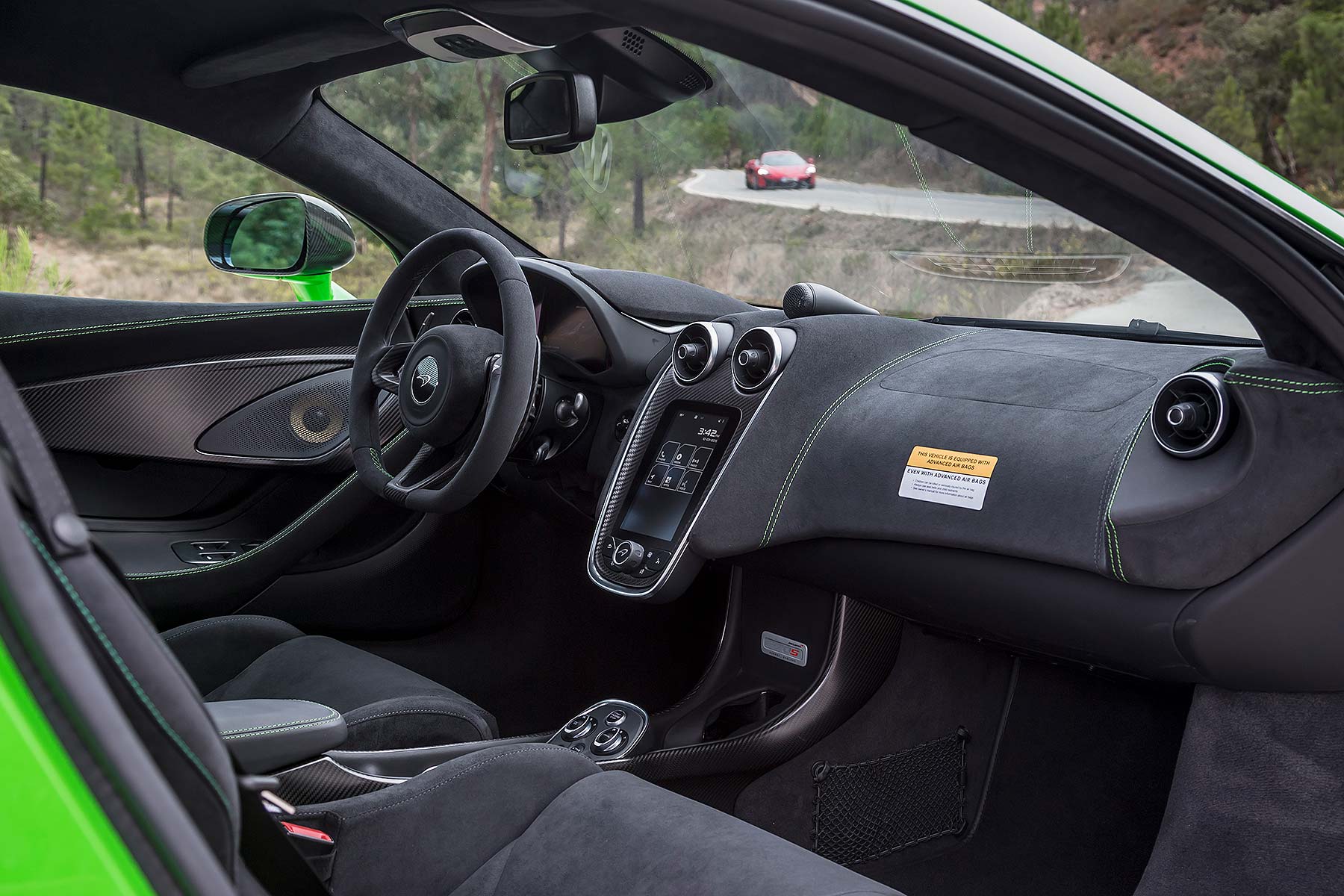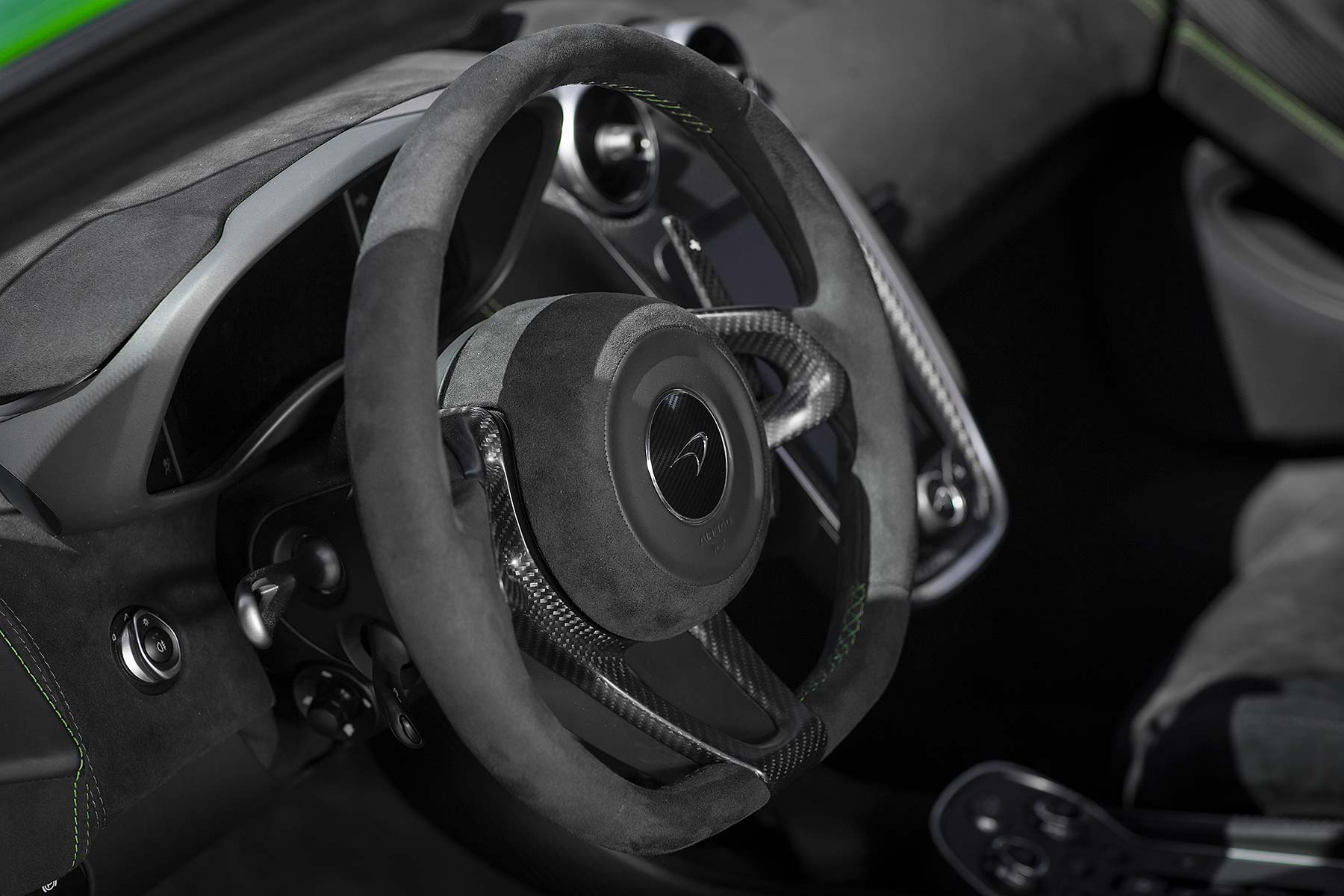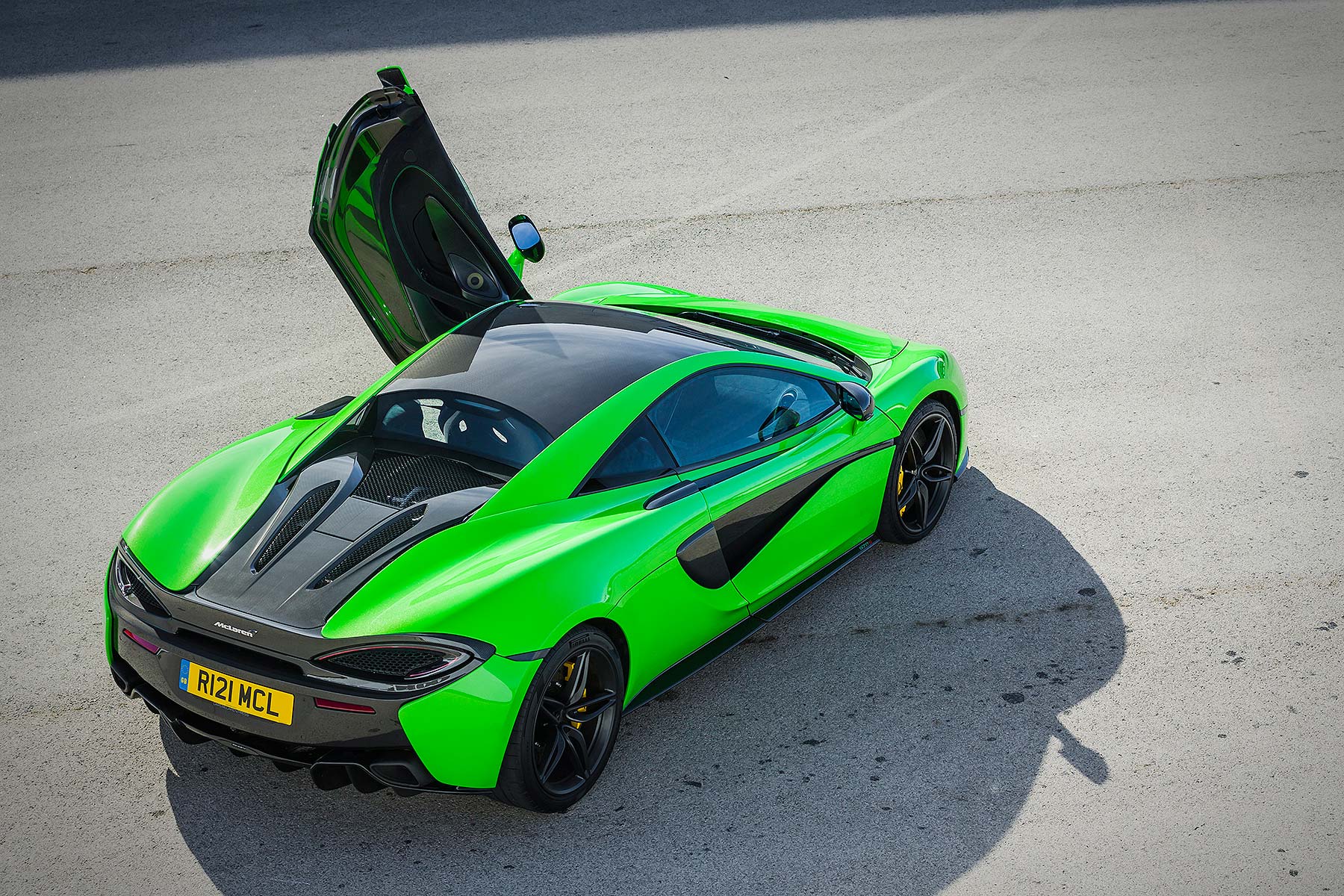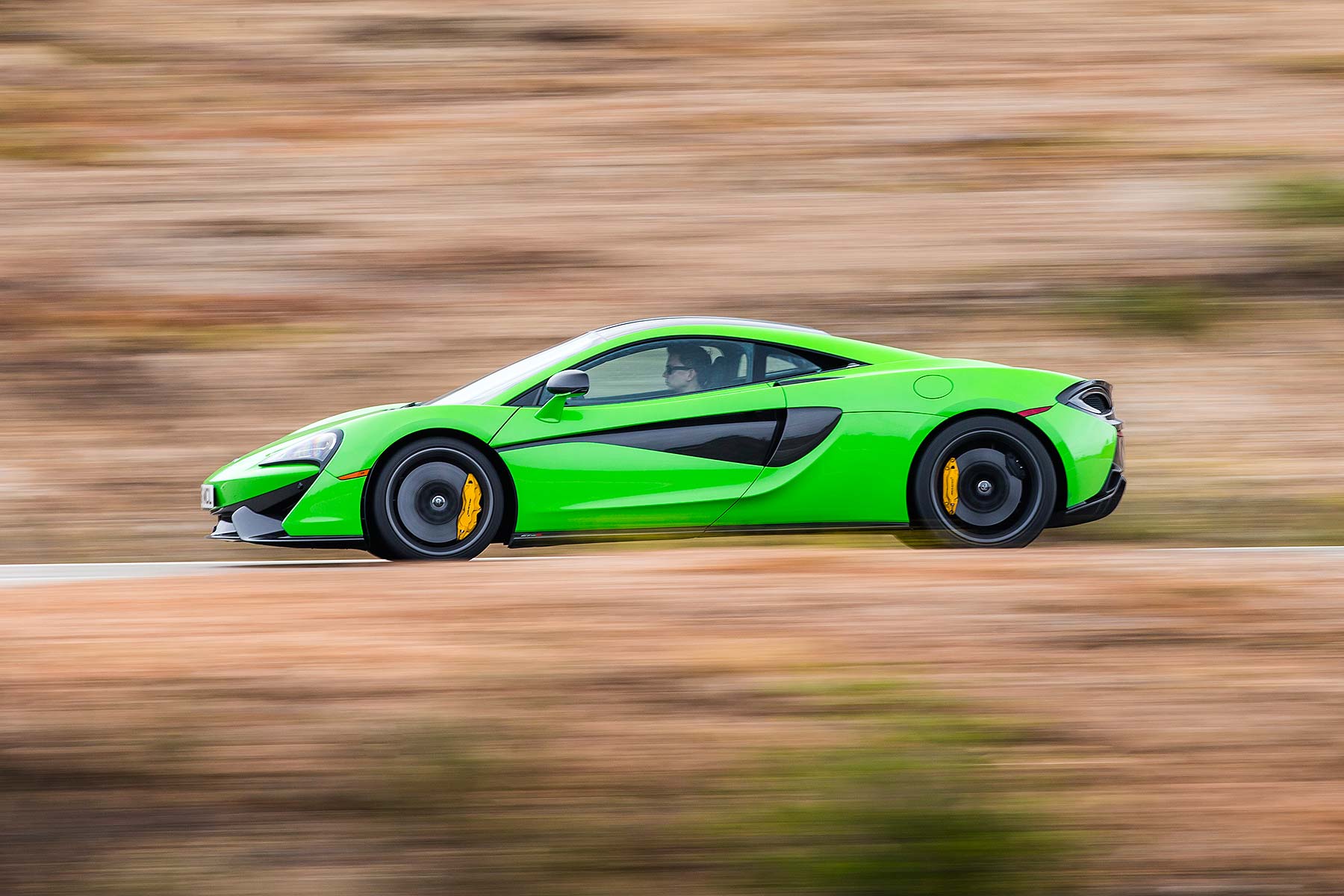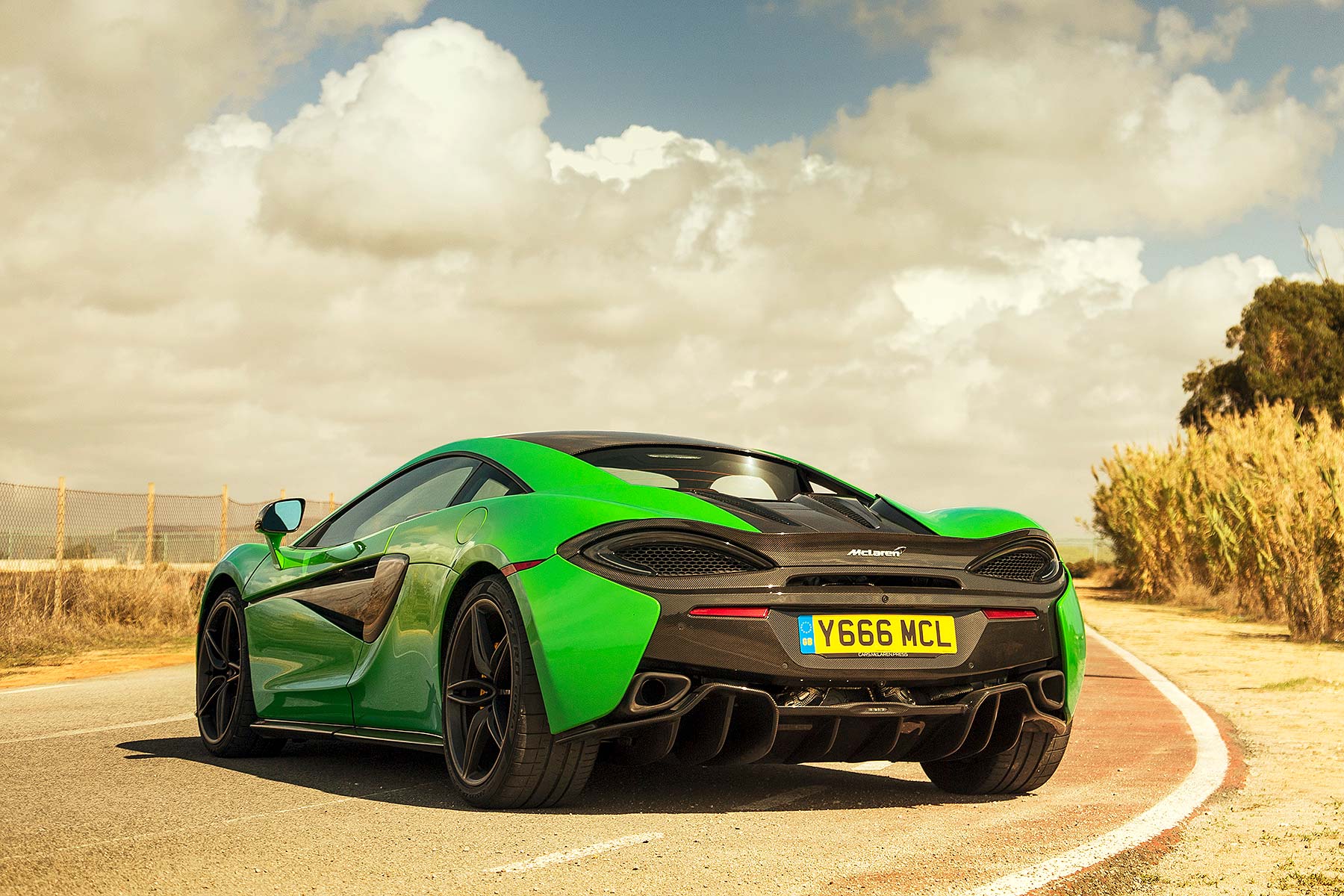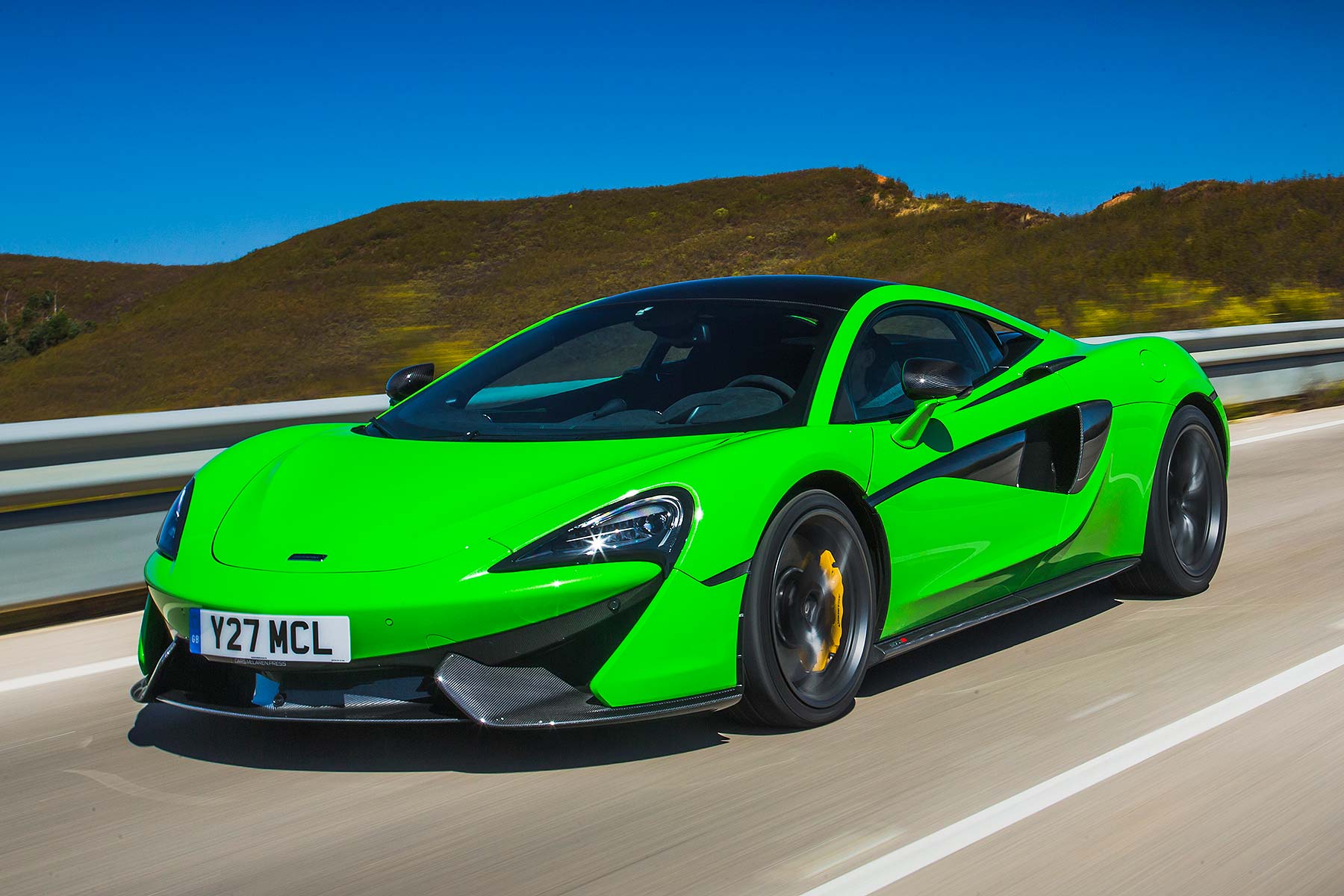 Six years ago, McLaren Automotive was created. Four years ago, it launched its first road car. Today, it’s made more than 6,000 cars, posted its second year of profits after launching more than a car a year, and is now gearing up for its biggest challenge yet: taking on the Porsche 911 with the new McLaren 570S.
Six years ago, McLaren Automotive was created. Four years ago, it launched its first road car. Today, it’s made more than 6,000 cars, posted its second year of profits after launching more than a car a year, and is now gearing up for its biggest challenge yet: taking on the Porsche 911 with the new McLaren 570S.
Up to now, McLaren has been a supercar and hypercar manufacturer: the 570S (and slightly cheaper, more accessible 540C) is its first sports car. It will also go up against the Audi R8, Lamborghini Huracan and Mercedes-AMG GT; it will very quickly become the best-selling McLaren ever.
The 540C costs £126,000 but, at least in Britain, most sold will be the £143,250 570S. Do those price points sound familiar? So they should; a Porsche 911 Turbo PDK is £121,523; the Turbo S PDK is £143,045. Audi R8? £134,500 in 610hp plus guise, £119,500 as a 540hp standard car.
Visually, the 570S is clearly a McLaren family car but less of a mini 650S than you might think from the images (not least because it’s actually bigger than a 650S, certainly in terms of length and height). The front is the most familiar aspect, albeit sharper and more incisive here; and it gets more different the further you go back.
The sides are slimmer, more sculpted, have more form than the big, blocky 650S supercar. The duct in the side is beautifully functional aero, feeding the radiators and directing air aring the rear ‘flying buttresses’; this cancels the lift generated by airflow from the roof. The concave rear window is a lovely touch and the dark-finish rear deck exposes the engine beneath active cooling grilles wonderfully.
The rear is how you’ll split a 570S from a 650S at 50 paces. Without the 650S’ rear Airbrake, it’s a lot slimmer, more taut and toned; the rear haunches are positively curvaceous and the forms are quite something (that’s why body panels are aluminium rather than carbon fibre – it’s the only way to get the surfaces so well-defined).
It’s a striking, exciting, unique car to look at, all the more so as it brings the F1-grade McLaren brand into its most accessible sector yet. Arguably McLaren Automotive’s most important car, the business case largely rests on getting the 570S right. So, is it?
2015 McLaren 570S: on the road
The McLaren shares an engine, key chassis components and architectural elements with the 650S, but not its character. This is key: McLaren hasn’t just made a cheaper supercar, but a sports car with its own distinct feel. They really are more different than you’d ever first suspect.
The 650S has a rear Airbrake that pumps up the downforce for hard cornering; the 570S does not. The 650S has ProActive Chassis Control adaptive anti-roll; the 570S does not (but it retains the adaptive dampers). The 650S has ultra-wide tyres on the rear; the 570S caps them to 285/35-section 20-inch Pirelli rubber. See the approach? Basically, where the 650S is rock-solid and planted, the 570S is playful and slidey.
Feel through the controls is sublime. Steering is immediate, palmy and direct, covering your hands in feedback: needless to say, it’s perfectly, uncommonly well weighted. The firm carbon-ceramic brakes complement it – the pedal’s actually a bit weightier than you’d find in a Porsche, but the depth of pin-perfect accuracy means it’s no issue once you’re used to it.
Because it’s a sports series car rather than a super series, McLaren’s engineered a light and agile front end with truly whip-crack response and turn-in (that panoramic visibility helps here). Confident agility, precision-placement and all that feedback makes it an absolute delight to thread through twisting roads: a mid-engined layout and lack of heft means it’s wieldier than an Audi R8, more alive than a 911 Turbo.
And it’s up for hooning. Rear-end grip is sports car level but not another-level high: you can get the back end out if you dial back the traction systems (McLaren actually engineers them to let you do this while still retaining a safety net) and you soon find drifting out of corners is the most natural thing in the world. Honest. It won’t bite. It’s enormous fun.
Ride quality is barely affected by the switch from active anti-roll to regular anti-roll bars. Compliance and body control are world class and the way it breathes with racecar-like quality of damping over rough roads is superb. And just as the ride dampens away wobbles you don’t want to feel, so too does the ultra-rigid steering, which remains shimmer-free even over the most hideous mid-corner bumps.
McLaren’s changed 30% of the engine compared to the 650S including, significantly, the exhaust manifold. It’s now equal-length and sounds divine – different and more melodious to its supercar sibling. What hasn’t changed is the speed. Boy, it’s fast. 3.2 seconds to 62mph proves it’s fast; it’s the effortlessness and effervescence of this speed that’s so compelling though.
Twin-turbos spool up without delay and deliver humungous torque: the mid-range surge is all you need. Then you find a straight and let it redline – the most wild howl combines with ridiculous performance at this price point. But, crucially, whereas the Porsche 911 Turbo gathers pace without you noticing, you’re with the 570S every step of the way, fully involved in its potency. It’s a wonderful feeling.
There’s more, from the intensity of the punch you want from the seamless-shift gearchange, to the fact all the 570S’ delicious clarity of feel is yours even when you’re not driving on the absolute limit (not something every sports car can claim). Really though, it’s the enthusiastic enjoyment you get from driving it that really sets it apart. McLaren, straight-laced and clinical? The wonderful 570S disproves that absolutely.
2015 McLaren 570S: on the inside
You can tell McLaren Automotive is still a young car company, because the detail improvements within the 570S compared to the 650S are clear. Take the door panels: flat and plain on the 650S, wonderfully detailed and shaped on the 570S. McLaren’s even integrated door bins big enough to swallow water bottles. It’s also worked out how to integrate a glovebox and – shock – installed vanity mirrors for the first time (but not vanity mirror lights: “That would be going too far.”)
McLaren has retained its trademark dihedral (“scissor”) doors for the 570S, engineering them so they take up less space in compact car parks: bosses say you need less space to get in than for a Ferrari 458 or Porsche 911 – and “it’s easier and more elegant to step into a 570S”.
Helping this is a reengineered carbon fibre MonoCell II with a lower, slimmer sill, making the 570S almost a step-in sportscar. The incredibly reassuring sense of sitting within a strong, secure safety cell remains though, just one that’s less compromised, more spacious and better laid out than you’d expect for a non-Porsche supercar.
Visibility is fantastic – panoramic, uncorrupted. The windscreen is wide, super-deep (actually, deeper than it is wide) so you can almost see the apex you want to hit as you hit it; the front wing peaks, visible from the driver’s seat, correspond to the centreline of the tyres, so you can use them as guides. Side windows are deep, McLaren’s moved the door mirror back so it’s out the way, and even rear visibility is aided by the big, concave screen and slim pillars. It all really gives you confidence to drive more quickly.
The cabin design is an evolution of that in the 650S, sharing many of the details such as the portrait-mounted IRIS infotainment screen, beautiful column stalks and snazzy switchgear. It’s slimmed down though, most obviously through the floating centre console that opens up space for extra cupholders and stowage slots.
Indeed, McLaren’s really sweated practicality, claiming class-leading storage space from a central arm rest cubby to ingenious pockets and boxes dotted throughout the cabin. The area behind the front seats is carpeted and spacious, while the 144-litre front luggage bay is deep and wide. It’s one-action open and close too; there’s no fiddly latch to undo like on a Porsche 911.
It exudes modern hand-crafted quality. McLaren knows how to build an impeccably-finished car and the 570S has all the clean-room F1-like finish of other models, despite its higher volumes (after all, it is built on exactly the same line). It’s a high-tech, contemporary luxury that’s unique at this price point and is a cut above Porsche and Aston Martin.
2015 McLaren 570S: running costs
McLaren is quoting remarkable retained values for the 570S, showing how desirable it is. After 3 years and 36,000 miles, the 570S will retain 63% of its list price. The next-best Audi R8 V10? 49.3% – nearly 14% less! The Porsche 911 Turbo S will retain 47%, 16% less than the McLaren. As they’re almost the same price, that’s a big monetary difference.
So it proves: on a PCP finance scheme, your 570S will be worth £90,248 at the end of the 3-year term. The 911 will be worth £67,165. More than £23,000 less. And this is why you can buy a McLaren 570S for £995 a month on finance, rather than £1,533 for a Porsche 911 Turbo S and £1,863 for the Audi R8 V10.
Running costs complement such low (well, by supercar standards) ownership costs. Emissions of 249g/km CO2 are intentional; this dips it beneath the 250g/km US Gas Guzzler tax. For a 570hp car, it’s a relative fuel-sipper, averaging 26.6mpg. Helping this is engine stop-start, fitted to a McLaren for the first time ever; it even has its own button.
Servicing is every 10,000 miles or one year – but the Mobil 1 oil McLaren uses is so advanced, the firm will offer to extend the oil change to two years if you don’t cover 10,000 miles and the visual service check is all OK. Overall maintenance costs are lower than for any McLaren: the firm reckons they’re now half what the servicing costs for the MP4-12C was at launch in 2011.
Aluminium bodywork is easier and more cost-effective to repair than carbon fibre, so this will have a big effect on accident repair work; it should also mean insurance costs are not quite as supercar-exotic as for previous McLarens. Overall, it’ll still be a bit more expensive to run than a Porsche, admits McLaren, but the gap should be manageable for most owners – with retained values more than making up for it.
2015 McLaren 570S: verdict
The McLaren 570S is unquestionably a five-star car, without doubt a new sports car great. Just like the Audi R8 at launch, it’s a new take on the super sports car, one that’s thoroughly McLaren and, because of the supercar richness it delivers for £140k, will have Porsche holding special engineering meetings to dissect it.
It drives wonderfully well and is heroically fast, but it’s the additional usability that will make the 570S. It takes McLaren from being unobtainable to being the cool sports car you may well now see on the street. And what pleasures its lucky owners have in store.
We wondered if it would be too 650S to find its feet in McLaren’s range. We needn’t have feared. The 570S is a delicious new addition to the sports car ranks that everyone considering an Aston Martin V8 Vantage, Audi R8, Mercedes-AMG GT and Porsche 911 must check out. That’s how compellingly complete it is.
2015 McLaren 570S: specifications
Engine: 3.8-litre V8 twin-turbo petrol
Price: £143,250
Power: 570hp
Torque: 443
0-62mph: 3.2secs
Top speed: 204mph
Fuel economy: 26.6mpg
CO2 emissions: 249g/km
